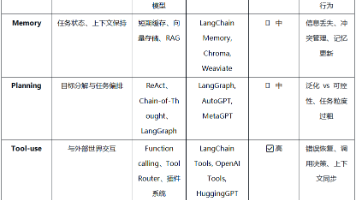AI赋能新闻舆情分析:从数据到洞察
人工智能通过数据采集、情感分析、主题建模、趋势分析和实体识别等技术,能够高效地从新闻大数据中提取有价值的信息,为舆情分析提供有力支持。代码示例展示了如何实现这些技术的核心功能,实际应用中还需根据具体需求进行调整和优化。
人工智能如何利用新闻大数据进行舆情分析
舆情分析是通过对大量新闻、社交媒体等文本数据进行挖掘和分析,以了解公众对特定事件、产品或话题的态度和情绪。人工智能技术在这一领域的应用显著提升了效率和准确性。以下是人工智能利用新闻大数据进行舆情分析的关键技术和方法。
数据采集与预处理
舆情分析的第一步是从多个新闻源获取数据。常见的数据来源包括新闻网站、社交媒体平台、论坛等。网络爬虫技术是采集这些数据的核心工具。Python的Scrapy和BeautifulSoup是常用的爬虫库。
import requests
from bs4 import BeautifulSoup
url = "https://example-news-website.com"
response = requests.get(url)
soup = BeautifulSoup(response.text, 'html.parser')
articles = []
for article in soup.find_all('div', class_='article'):
title = article.find('h2').text
content = article.find('p').text
articles.append({'title': title, 'content': content})
采集到的数据通常包含噪声,如HTML标签、特殊符号等,需要进行清洗。文本清洗包括去除停用词、标点符号和标准化文本格式。
文本情感分析
情感分析是舆情分析的核心任务之一,旨在判断文本表达的情绪是正面、负面还是中性。深度学习模型如BERT和LSTM在这方面表现优异。
from transformers import BertTokenizer, BertForSequenceClassification
import torch
tokenizer = BertTokenizer.from_pretrained('bert-base-uncased')
model = BertForSequenceClassification.from_pretrained('bert-base-uncased')
text = "This product is amazing!"
inputs = tokenizer(text, return_tensors="pt")
outputs = model(**inputs)
predictions = torch.argmax(outputs.logits, dim=1)
除了预训练模型,传统机器学习方法如支持向量机(SVM)和朴素贝叶斯也可以用于情感分析。
主题建模
主题建模帮助识别新闻数据中的主要话题。Latent Dirichlet Allocation(LDA)是一种常用的主题建模算法。
from sklearn.feature_extraction.text import CountVectorizer
from sklearn.decomposition import LatentDirichletAllocation
corpus = ["News article 1 text...", "News article 2 text..."]
vectorizer = CountVectorizer(max_df=0.95, min_df=2, stop_words='english')
X = vectorizer.fit_transform(corpus)
lda = LatentDirichletAllocation(n_components=5, random_state=42)
lda.fit(X)
for idx, topic in enumerate(lda.components_):
print(f"Topic {idx}:")
print([vectorizer.get_feature_names_out()[i] for i in topic.argsort()[-10:]])
舆情趋势分析
舆情趋势分析关注公众情绪随时间的变化。时间序列分析和可视化工具如Matplotlib和Pandas可以用于展示舆情趋势。
import pandas as pd
import matplotlib.pyplot as plt
data = {'date': ['2023-01-01', '2023-01-02', '2023-01-03'],
'sentiment': [0.5, -0.2, 0.8]}
df = pd.DataFrame(data)
df['date'] = pd.to_datetime(df['date'])
plt.plot(df['date'], df['sentiment'])
plt.xlabel('Date')
plt.ylabel('Sentiment Score')
plt.title('Sentiment Trend Over Time')
plt.show()
实体识别与关系抽取
命名实体识别(NER)用于识别新闻中的关键实体(如人名、组织名、地点)。关系抽取则进一步分析这些实体之间的关系。
import spacy
nlp = spacy.load("en_core_web_sm")
text = "Apple Inc. announced a new product in Cupertino."
doc = nlp(text)
for ent in doc.ents:
print(ent.text, ent.label_)
舆情预警系统
舆情预警系统通过实时监测和分析新闻数据,及时发现潜在的负面舆情。结合阈值设定和实时数据处理技术,可以实现自动预警。
from kafka import KafkaConsumer
import json
consumer = KafkaConsumer('news_topic',
bootstrap_servers=['localhost:9092'],
value_deserializer=lambda x: json.loads(x.decode('utf-8')))
for message in consumer:
sentiment = analyze_sentiment(message.value['text'])
if sentiment < -0.5:
send_alert("Negative sentiment detected!")
总结
人工智能通过数据采集、情感分析、主题建模、趋势分析和实体识别等技术,能够高效地从新闻大数据中提取有价值的信息,为舆情分析提供有力支持。代码示例展示了如何实现这些技术的核心功能,实际应用中还需根据具体需求进行调整和优化。
更多推荐
 已为社区贡献13条内容
已为社区贡献13条内容







所有评论(0)